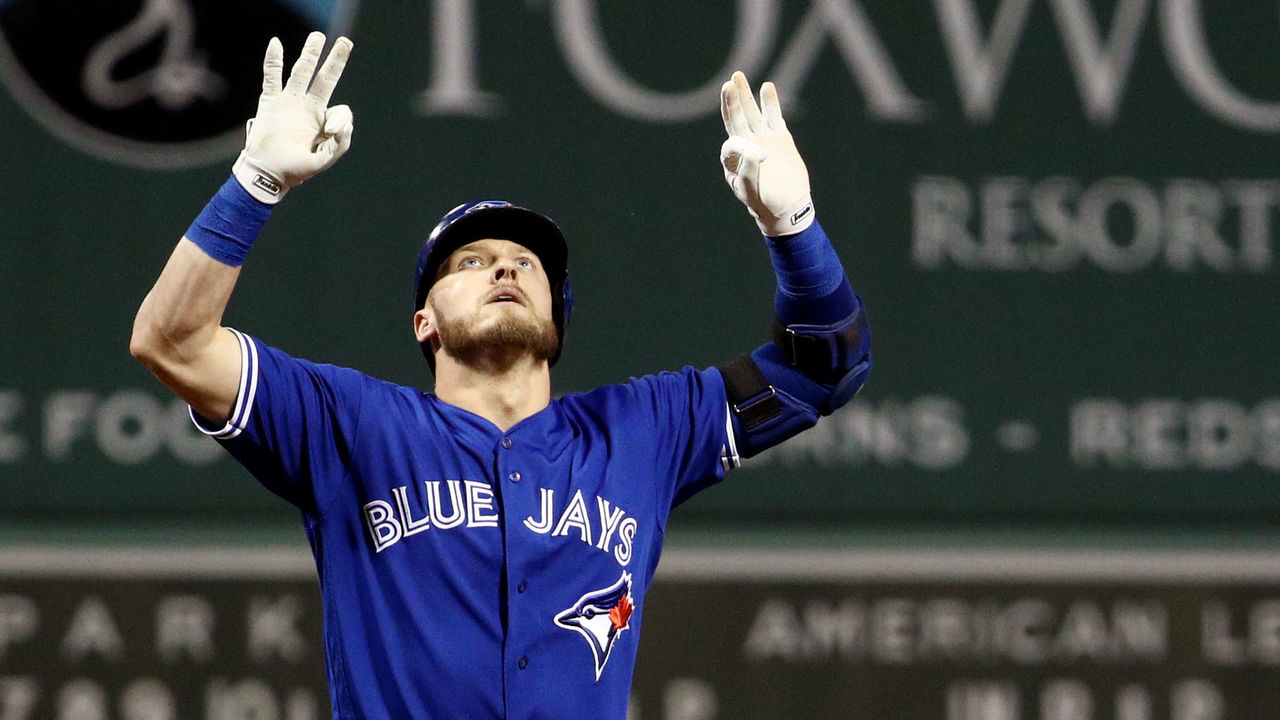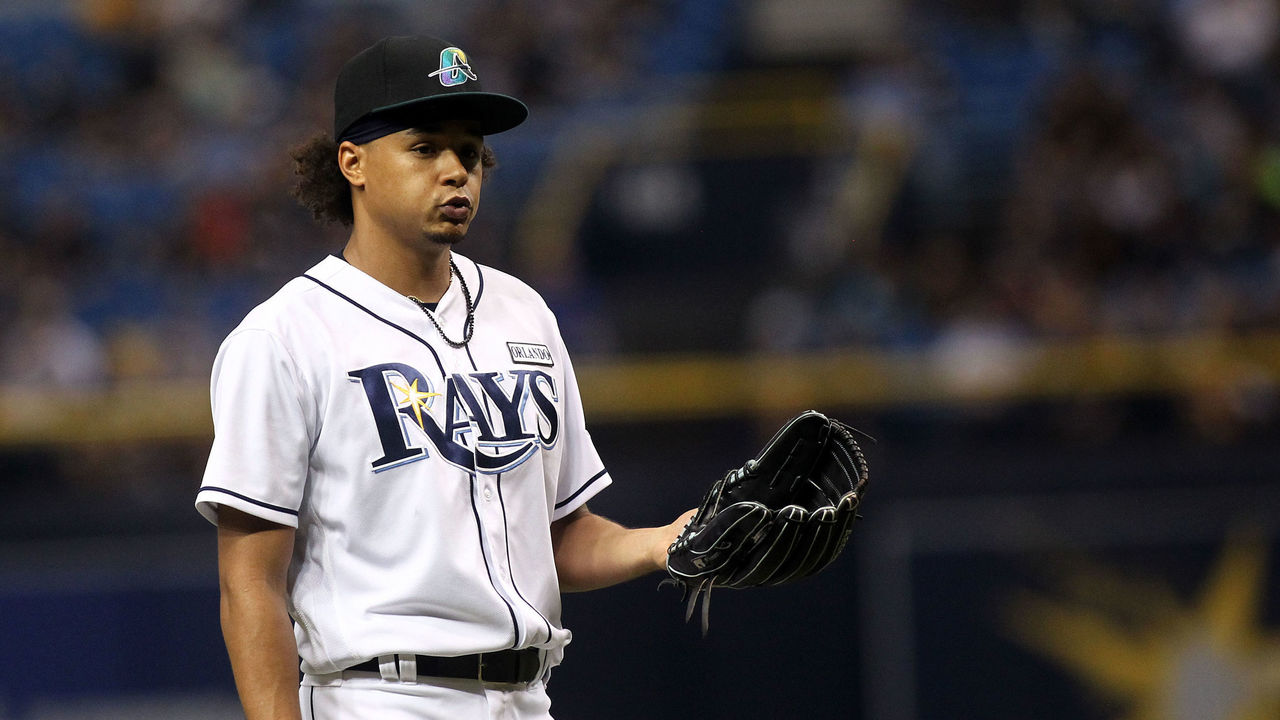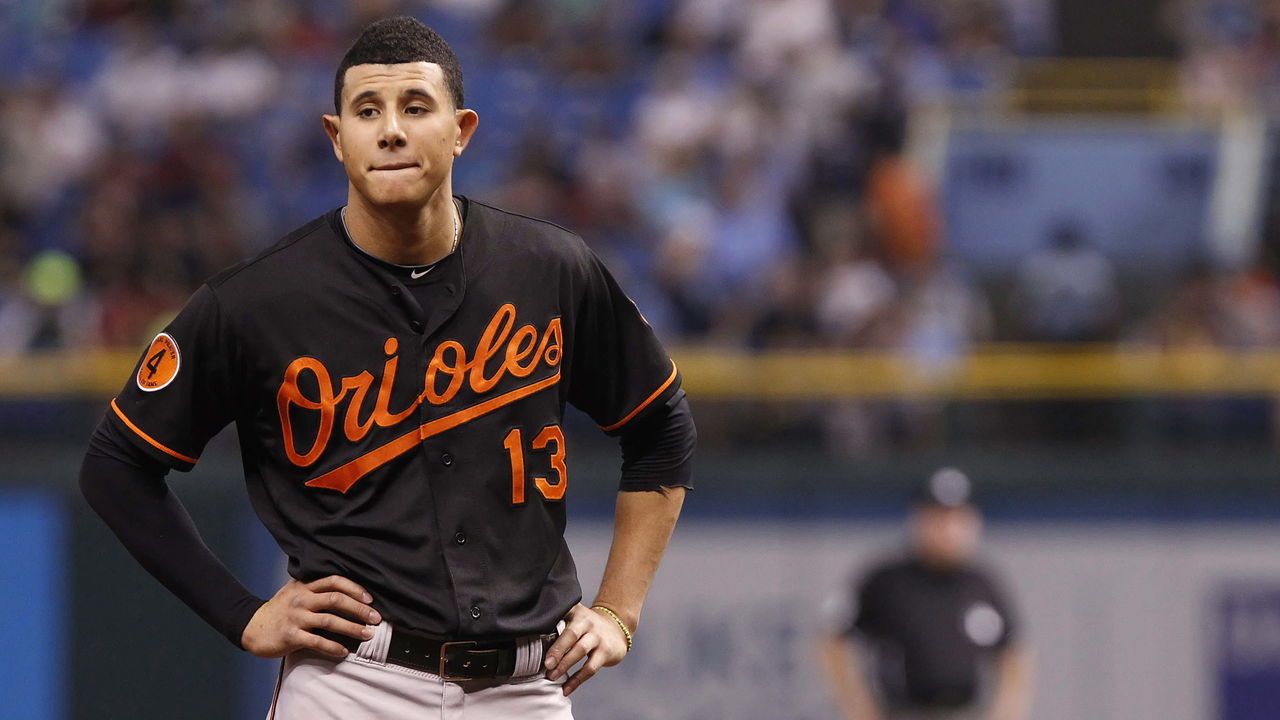Who's the favorite between revamped Yanks, Red Sox? 5 burning questions in the AL East
With Opening Day around the corner, theScore's Jonah Birenbaum previews each division to get you ready for the 2018 MLB season. Today, he's answering five burning questions about the American League East.
AL Central | AL West | NL East | NL Central | NL West
Who's the favorite between the Red Sox and revamped Yankees?
There really wasn't a wrong answer to this question three weeks ago. Obviously, the Yankees’ lineup improved dramatically this winter with the acquisition of Giancarlo Stanton, but the Red Sox upgraded, too, adding J.D. Martinez to more-or-less the same roster that won 93 games in 2017 despite their lackluster offense. Thanks to the tireless efforts, however, of Yankees general manager Brian Cashman, along with some injury trouble at Red Sox camp, it’s increasingly difficult to view the longtime rivals as division co-favorites: the Yankees are the team to beat in the American League East.

Last week, not long after acquiring Brandon Drury from Arizona, Cashman signed veteran infielder Neil Walker to a hilariously inexpensive one-year deal, raising the floor that much more for a team that already had considerable depth and a crazy-high ceiling. Now, the Yankees can take their time, if need be, with their two highly touted infield prospects, Gleyber Torres and Miguel Andujar, both of whom were optioned back to the minors last week; with Walker and Drury, their newly fortified lineup is deep enough to withstand some regression from Aaron Judge or Aaron Hicks, or another potential injury to Greg Bird. And if their prospects do force Cashman's hand by tearing up Triple-A out of the gate, look out. Come July, the Yankees' lineup could look something like: Brett Gardner (LF), Aaron Judge (RF), Giancarlo Stanton (DH), Gary Sanchez (C), Greg Bird (1B), Didi Gregorius (SS), Neil Walker (3B), Aaron Hicks (CF), Gleyber Torres (2B). My sympathies to all American League pitchers.
For argument's sake, though, let's even say the two lineups are a wash - Judge could suffer through a brutal sophomore slump, after all, and Stanton has been fairly injury-prone throughout his career (he averaged only 115 games per season from 2012 through 2016); besides, the Red Sox underperformed at the plate last year, anyway. Well, with Drew Pomeranz’s elbow barking, Steven Wright still recovering from surgery, and Eduardo Rodriguez likely out at least the first couple weeks of the season, the Yankees also have the superior rotation (even though the Red Sox have the division's best starter in Chris Sale), and New York's bullpen is the best in the majors, too - maybe the best in history. Let's get a little more quantitative, though, and take a gander at the projections for their respective pitching staffs, courtesy of FanGraphs:
| Pitcher (NYY) | WAR | Pitcher (BOS) | WAR |
|---|---|---|---|
| Luis Severino | 4.9 | Chris Sale | 5.4 |
| Masahiro Tanaka | 3.6 | David Price | 3.6 |
| Sonny Gray | 3.3 | Rick Porcello | 2.5 |
| CC Sabathia | 1.6 | Drew Pomeranz | 2.4 |
| Jordan Montgomery | 2.1 | Steven Wright | 0.7 |
| Aroldis Chapman | 2.2 | Craig Kimbrel | 2.3 |
| David Robertson | 1.6 | Carson Smith | 0.8 |
| Tommy Kahnle | 1.1 | Joe Kelly | 0.7 |
| Dellin Betances | 1.2 | Matt Barnes | 0.2 |
| Chad Green | 0.9 | Heath Hembree | 0.2 |
| Adam Warren | 0.2 | Bobby Poyner | 0.0 |
| Chasen Shreve | 0.1 | Roenis Elias | -0.2 |
| 22.8 | 18.6 |
Start spreading the news: the Yankees are terrifying.
Can the Blue Jays contend for the second wild-card spot?
The short answer is: yes, they can. Not only are they far more talented than their 76-86 record from last season suggests - only two teams lost more days to injury, with Josh Donaldson, Aaron Sanchez, Devon Travis, and Russell Martin each spending considerable time on the disabled list - but general manager Ross Atkins insured this winter against the likelihood of injuries to some of his key contributors in 2018 by adding versatile, high-floor reinforcements like Randal Grichuk, Yangervis Solarte, and Curtis Granderson. Perhaps more importantly, though, the shrinking middle-class in the American League has effectively reduced the pool of contenders for the second wild-card spot to, like, three teams: the Los Angeles Angels, Minnesota Twins, and Toronto; every other AL club, according to FanGraphs' projection model, is either winning 90-plus games or finishing below .500.

Even with dramatically improved depth and health, though, for the Blue Jays to eke one last playoff push out of their current competitive window, they have to get off to a strong start - something they've consistently failed to do in recent years. Over the past five seasons, the Blue Jays have managed a ghastly 52-74 record (.413) in April, and their early-season woes reached a nadir last year when they dropped 11 of their first 13 games and didn't come within 4 1/2 games of first place in the division after April 12. If they aren't within striking distance at the All-Star break, the Blue Jays will likely look to unload their expiring assets ahead of the non-waiver trade deadline, namely Donaldson, J.A. Happ, and Marco Estrada - each of whom will be free agents next winter - and possibly even players who remain under team control through 2019, like Justin Smoak and Jaime Garcia.
What can the Red Sox expect out of David Price?
Following an injury-marred 2017 campaign in which Price battled on-again, off-again elbow trouble, the Red Sox can reasonably expect one of two things to happen this season: either he'll pitch effectively, because, when healthy, Price is still an elite starter with top-end stuff, or he'll continue to deal with debilitating injury problems and miss an extended chunk of the season, because he's a pitcher, and pitchers break. Banking, at this point, on one or the other, flies in the face of everything we know about pitcher injuries, which is mostly nothing. For what it's worth, Price, who took a "laid-back" approach this spring to avoid running out of gas midway through the summer, was masterful in his Grapefruit League debut last week, allowing just two baserunners while fanning five over four shutout innings Thursday at JetBlue Park. And he said earlier this month that he's no longer thinking about the elbow problems that limited him to 74 2/3 innings - his fewest since his 2008 debut year - last season.

"I think I'm ready to have my best year," Price said recently. "I just haven't had two good years here. If I would have had an average year for myself (it would) still be my best year here, by far. I look to go out there and dominate like I know I'm capable of doing, and that's what I expect to do."
Should the newly rebuilding Rays trade Chris Archer?
Realistically, the Rays are going to trade him at some point - ask David Price or James Shields or Evan Longoria or Jake Odorizzi; this is what the Rays do - but the club would be remiss to unload him now, notwithstanding ownership's aversion to paying players more than the bare minimum.

Though his defense-independent numbers have been consistently excellent since 2014, Archer's ERA has hovered around league average in each of the past two seasons (4.05) largely on account of his curiously low strand rate. As such, the two-time All-Star isn't exactly at the peak of his value right now, and the recent dip in performance, as superficial as it may be, will have significant consequences in a trade market that skewed in favor of buyers all offseason: in exchange for Odorizzi, for example, the Rays got a 20-year-old shortstop who didn't crack the Minnesota Twins' top 30 prospects list last year; Odorizzi isn't nearly as talented as Archer, of course, but the 27-year-old still boasts a 3.71 ERA (108 ERA+) over the last three years and remains arbitration-eligible through 2019. The return in prospect capital felt similarly underwhelming in the deals that sent Longoria and Andrew McCutchen to San Francisco, though, in fairness, the former is still owed a ton of money and the latter is a free agent next winter. The point is, though, right now, Archer couldn't command a fraction of what, say, the Chicago White Sox got last offseason for Chris Sale, so the Rays ought to hang onto him and allow him to restore some of his value before they ship him off. And because Archer's contract is so reasonable, even in this increasingly depressed baseball economy, the Rays can take their time, if they so please; they can trade him next offseason, they can ship him off two winters from now, or they can move him ahead of the 2020 trade deadline. And, who knows, maybe they'll actually be competitive again a couple years down the road and have to reevaluate whether to trade him at all?
Which team is Manny Machado playing for on Aug. 1?
All winter long, Machado's name surfaced in trade rumors, but for reasons unbeknownst to most of us - Did owner Peter Angelos kibosh a deal? Were the offers they received just too underwhelming? Do they actually think they can compete? - the Orioles decided not to move him. Put another way, the Orioles spent the winter delaying the inevitable, likely to their own detriment, because it's pretty much a foregone conclusion that Machado will be traded ahead of this year's deadline. The only question is: to whom?

Well, any team that would be willing to pull the trigger on Machado would seemingly need to meet four criteria: 1) the club must be a serious contender for a playoff berth; 2) the club must have a relatively deep stable of high-end prospects; 3) the club's incumbent shortstop must be significantly worse than Machado; 4) the club's incumbent shortstop must not be signed to a long-term deal.
| Name (Team) | 2018 WAR (Steamer) | Team's projected record |
|---|---|---|
| Francisco Lindor (CLE) | 6.1 | 93-69 |
| Manny Machado | 5.6 | - |
| Carlos Correa (HOU) | 5.4 | 101-61 |
| Corey Seager (LAD) | 5.2 | 94-68 |
| Trea Turner (WAS) | 4.0 | 90-72 |
| Andrelton Simmons (LAA) | 3.5 | 84-78 |
| Xander Bogaerts (BOS) | 3.4 | 93-69 |
| Brandon Crawford (SFG) | 3.0 | 82-80 |
| Addison Russell (CHC) | 2.9 | 94-68 |
| Didi Gregorius (NYY) | 2.6 | 95-67 |
| Elvis Andrus (TEX) | 2.1 | 78-84 |
| Paul DeJong (STL) | 2.1 | 87-75 |
| Jean Segura (SEA) | 2.0 | 80-82 |
| Troy Tulowitzki (TOR) | 1.9 | 86-76 |
Right off the bat, then, that likely eliminates the Indians, Astros, Dodgers, and Nationals, each a presumed division champion with a shortstop either better or nearly as good as Machado. The Angels, Blue Jays, Mariners, Cardinals, and Rangers are out, too, as they've all committed significant long-term resources to their current shortstops and likely wouldn't be willing, for one reason or another, to displace them, even for a potential postseason run. Ostensibly, that leaves the Yankees, Red Sox, Giants, and Cubs as potential suitors, but it seems unlikely the Orioles would trade Machado to a division rival, and both New York and Boston have excellent shortstops already, as well as tremendous depth at the left side of the infield. Ultimately, then, it comes down to the Giants and the Cubs - assuming, of course, the Giants are even in the wild-card race and have the pieces, following the McCutchen and Longoria trades, to convince the Orioles to give up Machado. And those may not be fair assumptions to make.
As such, we're predicting that Machado will be wearing a Cubs uniform come August. While their incumbent, Addison Russell, is seemingly a part of their long-term plans, he's coming off a disappointing season in which he took a considerable step back both offensively and defensively, and the Cubs are clearly comfortable swapping prospect capital for major additions at the trade deadline when a division title is within reach, shipping Gleyber Torres, Adam Warren, and two other prospects to the Yankees for Aroldis Chapman in 2016, then swapping Eloy Jimenez and another three prospects for Jose Quintana last July.